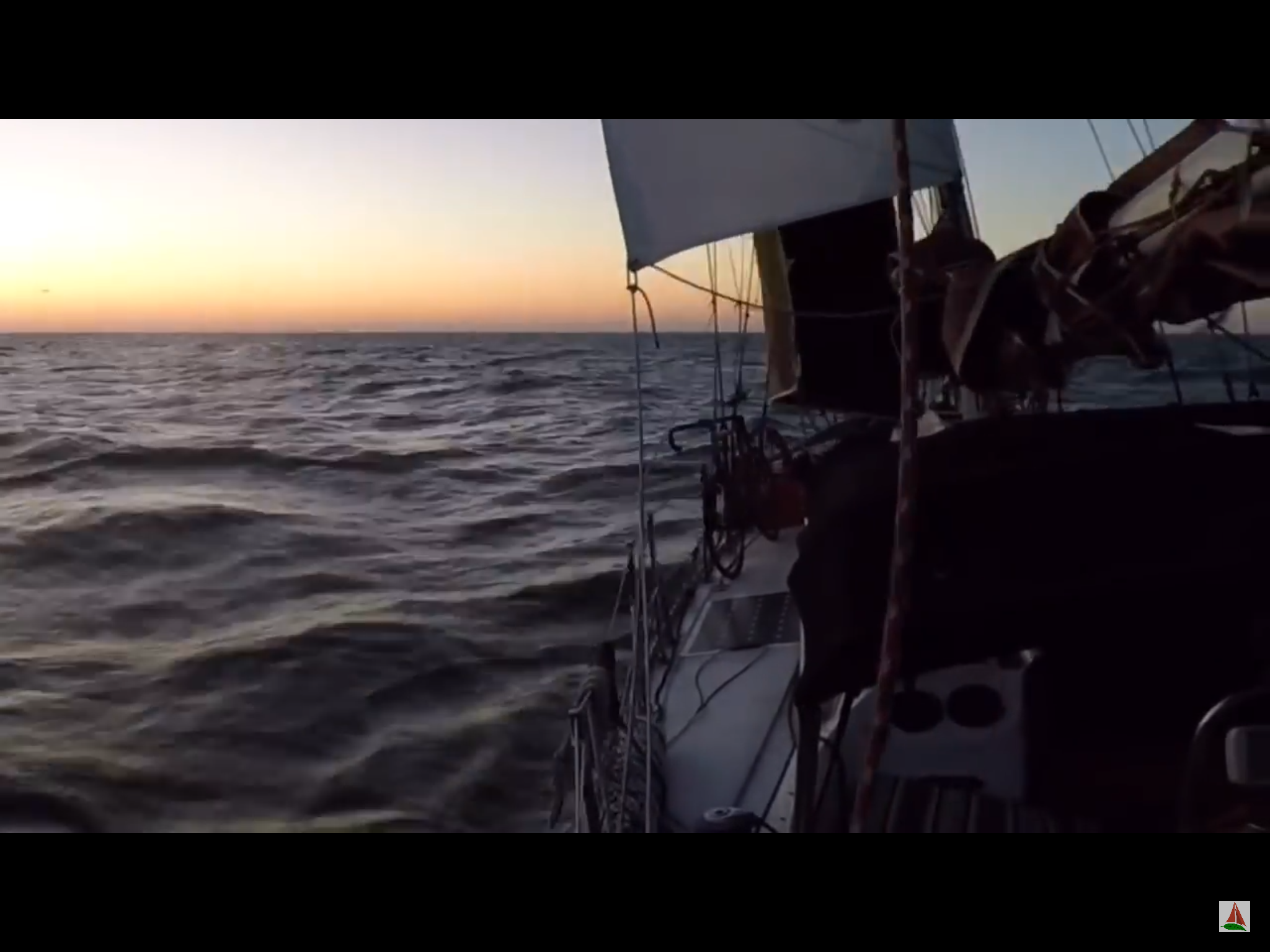Cold fronts are wonderful if you need to head against the prevailing winds. Their weather pattern will disrupt the normal flow of wind and allow you to make a windward passage on a run! Now, running in front of one of these systems presents an issue when it comes to balancing your sails.
You want to be heading downwind, so leehelm will be ideal to help you steer. This means that you want to have a more headsail flying and less mainsail flying. This can be achieved by deeply reefing the mainsail and flying a full headsail. While this will work, it does incorporate the boom into the equation. There is another option that will provide you with a small mainsail and no boom: the trysail.
A trysail is a small storm sail that is flown in lieu of the mainsail. It is sheeted directly to the toe rail, so the boom is not involved in its rigging. When on a run, the sheet can be eased to the point where it almost touches the shrouds, allowing the sail to fill up nice and full without chafing on the rigging.
Running always presents the fear of accidental jibes. With a boom, a lot of stress will be presented to the mainsheet, traveler, and gooseneck. Even a reefed sail will generate a lot of destructive force during an accidental jibe. A trysail will remove all of these fears and allow you to sail on a run with peace of mind.
The sheets of a trysail are rigged to the toe rail, giving them a wide lead back to the sail. Having such an angle leading to the tack of the sail will help prevent accidental jibes, as well as help hold the clew of the sail out towards the side of the boat when eased (just like a barber hauler on a headsail). If the sail does jibe accidentally, nothing really happens.
The sail is eased and will simply flop over to the other side of the boat. If you do nothing, it will probably flop back over to where you had it set originally. As it does this, no stress or damage will occur, allowing you to relax as your precious sails and rigging will be spared from the flip flopping.
You might feel that a trysail is a bit small to power your boat, but when properly trimmed for power in the face of a cold front, you will find it easy to achieve and maintain hull speed! This means that you will be able to sail along at full speed with a tiny sail and no headaches!



